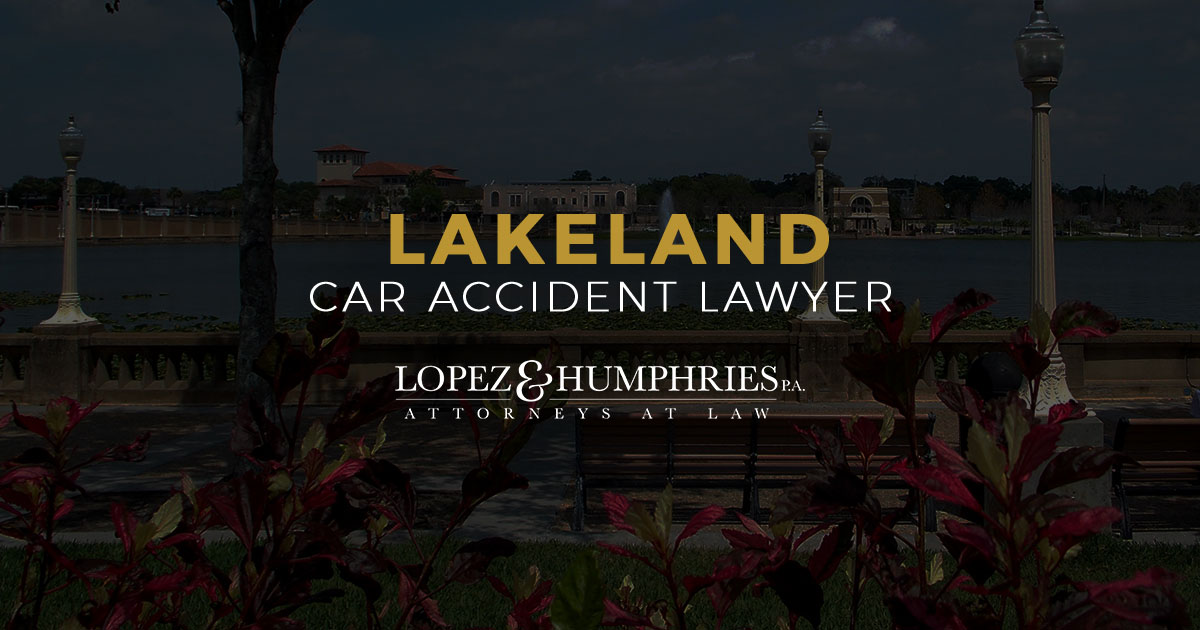Picture this: you’re cruising down the sunny streets of Lakeland, Florida, when suddenly – “BAM!” – another motorist throws you off course. You’re okay, but your ride’s toast and you can’t help thinking, “What now?”. This is where an experienced Lakeland car accident lawyer can become your savior in shining armor.

Why Choose a Lakeland Car Accident Lawyer
An auto accident, large or small, can completely turn your world upside down. It can leave you with a tangled mess of paperwork, medical bills, and unmistakable stress. When you’re sidelined by such a misfortune, you need someone who can help you navigate the Florida vehicle accident laws – and that’s just who your trusty Lakeland car accident lawyer is!
Lakeland Auto Injury Attorney: A Trusty Pilot in Rough Seas
What do a captain and a Lakeland auto injury attorney have in common? They BOTH know exactly how to steer you through a storm. Your attorney can help compile evidence, deal with insurance companies, and ensure you receive the maximum compensation for your ordeal. If that’s not a captain of justice, what is?
Betting on the Right Horse: Lakeland Car Crash Lawyer
Dealing with an accident’s aftermath can be like running a race – it’s tiring, it’s stressful, and you don’t want to finish last. Your Lakeland car crash lawyer is the champion steed you need to win this race, armed with expert knowledge of local laws and the drive to get you across the finish line – victorious and relieved.
Florida Vehicle Accident Lawyer: Knowing the Lay of the Land
It’s a no-brainer – no one knows Florida better than a Florida vehicle accident lawyer. They are well-versed in the state-wide laws that could affect your claim, and they know how local courts interpret these laws. You wouldn’t venture into a labyrinth without a map, would you? Hiring a Florida vehicle accident lawyer is like having a GPS for the complex world of vehicle accident laws!
The Personal Touch: Lakeland Personal Injury Attorney
Personal injury can be a deeply personal matter. Your Lakeland personal injury attorney understands this, offering not just legal expertise but a compassionate ear, listening to your story and tailoring their approach to suit you. Isn’t that just the kind of personalized experience you desire?
Find a Lakeland Car Accident Lawyer Near You
Address: 2420 Florida Ave S, Lakeland, FL 33803
Phone: 863 777-4191
A Safe Bet: Lakeland Motor Vehicle Accident Lawyer
Lastly, your Lakeland motor vehicle accident lawyer is the crucial safety net that catches you when you fall. They strive to shield you from any unjust treatment, ensuring you don’t suffer more than you already have. Their goal? To secure the best possible outcome for you and your case. Who wouldn’t want that safety net?
So there you have it folks. Whether it’s a minor fender-bender or a serious collision, enlisting a professional Lakeland car accident lawyer is the winning stroke. From comforting guidance to strategic expertise, these lawyers are the unsung heroes working behind the scenes to bring you justice, peace, and the compensation you rightly deserve. So the next time you find yourself, or a loved one, in an automotive pickle, remember—you’ve got a team in Lakeland ready to have your back!
